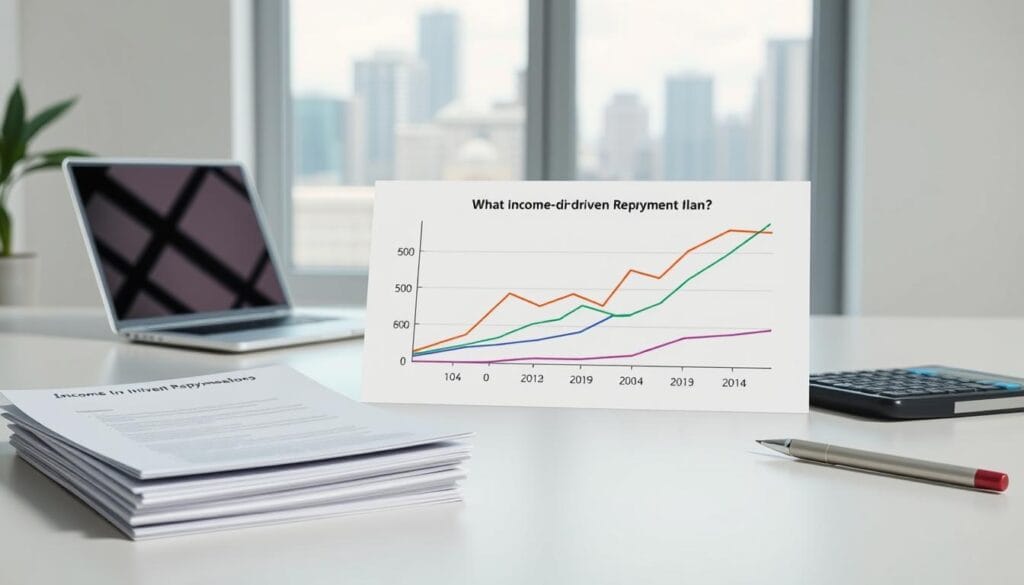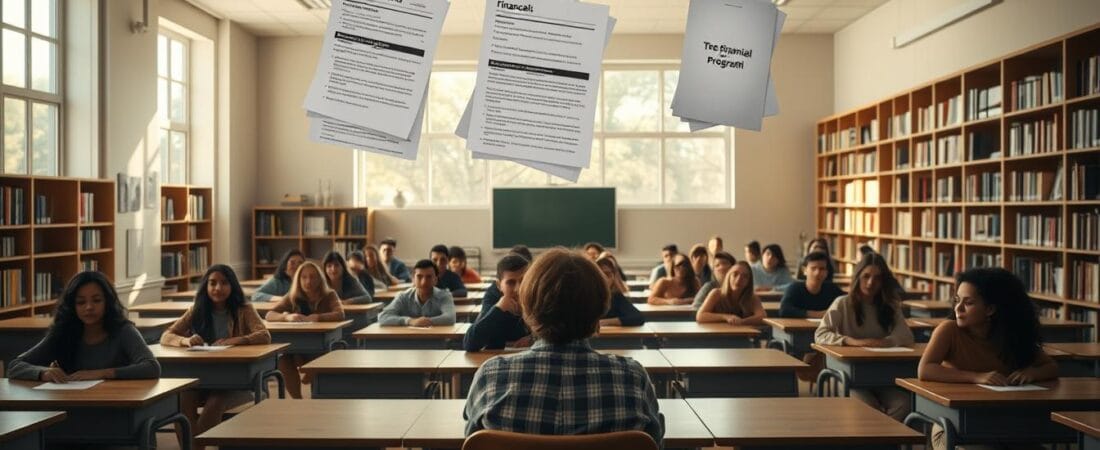Did you know that over 43 million Americans carry federal student debt, with an average of $16,000 for undergraduates and $28,000 for graduates? As the landscape of financial aid evolves, understanding the latest updates is crucial. The year 2025 brings significant changes, including recent legal challenges that could impact eligibility and repayment options.
For instance, a federal court injunction has temporarily blocked the implementation of the SAVE Plan, a key income-driven repayment strategy. Additionally, the Supreme Court’s rejection of pandemic-related debt relief has reshaped the post-pandemic financial environment. These developments highlight the importance of staying informed about federal and state-specific opportunities.
With more than 14 federal and state programs available in 2025, borrowers have a range of options to explore. From updated income-driven repayment plans to specialized forgiveness initiatives, strategic planning is essential. Tools like those on StudentAid.gov can help individuals evaluate their eligibility and make informed decisions.
Key Takeaways
- Recent legal actions have impacted income-driven repayment plans, including the SAVE Plan injunction.
- The Supreme Court’s decision on pandemic-related debt relief has reshaped the financial landscape.
- Over 14 federal and state programs are available in 2025, offering diverse repayment and forgiveness options.
- Strategic planning is essential to navigate eligibility and maximize benefits.
- State-specific opportunities complement federal programs, providing additional pathways for relief.
Introduction to Student Loan Forgiveness Programs

Navigating financial assistance options requires a clear understanding of available programs. For many Americans, these initiatives provide a pathway to managing federal student obligations effectively. The American Rescue Plan introduced tax-free forgiveness mechanisms, ensuring that relief does not come with a hidden tax burden.
It’s essential to distinguish between forgiveness and discharge. While both terms refer to debt relief, forgiveness typically applies to specific programs like service loan forgiveness, whereas discharge often relates to circumstances such as disability or school closure.
For military personnel, retroactive benefits offer eligibility windows that can significantly reduce financial strain. These opportunities highlight the government’s commitment to supporting those who serve.
Refinancing is another viable option, with rates ranging from 4.45% to 9.89%. Platforms like NerdWallet provide lender ratings to help borrowers make informed decisions.
Public service roles across local, state, and federal tiers qualify for specialized relief. This includes positions in education, healthcare, and non-profits, making it a versatile program for many professionals.
Finally, monitoring requirements for disability discharges ensure compliance and continued eligibility. Tools like debt repayment calculators can help individuals explore their options and plan strategically.
Eligibility Criteria for Student Loan Forgiveness

Understanding eligibility for debt relief can significantly impact financial planning. Whether you’re exploring income-driven repayment options or aiming for Public Service Loan Forgiveness (PSLF), meeting specific criteria is essential. Let’s break down the key requirements for these programs.
Income-Driven Repayment Plans
Income-driven repayment (IDR) plans adjust monthly payments based on income and family size. These plans include options like the SAVE Plan, which offers forgiveness after 10-25 years of qualifying payments. Payment caps typically range from 10% to 20% of discretionary income, making them accessible for many borrowers.
Undergraduates and graduates may have different timelines for forgiveness under IDR variants. For example, PAYE and IBR plans have specific hardship requirements, while REPAYE offers broader eligibility. It’s crucial to recertify income annually to avoid payment adjustments or lapses in eligibility.
Public Service Loan Forgiveness (PSLF)
The PSLF program requires 120 qualifying payments while working full-time for a qualifying employer. This includes government, non-profit, and certain public service roles. The PSLF Help Tool simplifies the employer certification process, ensuring accurate documentation.
Military service can also count toward qualifying payments, offering additional pathways for relief. TEPSLF provides exceptions for those with non-qualifying payment plans, expanding access to this valuable program. Direct Loans are typically required for eligibility, so borrowers should verify their loan type before applying.
Application Process for Loan Forgiveness

Applying for debt relief involves careful preparation and attention to detail. The process can be complex, but understanding the steps and requirements can make it manageable. Whether you’re exploring income-driven repayment options or seeking specialized relief, gathering the right documentation is crucial.
Required Documentation
To apply for relief, borrowers must provide specific documents. These include proof of income, such as W-2s or 1099 forms, and IRS transcripts for verification. For disability discharges, medical certification is required, and notarized documents are necessary for death discharges.
For the Public Service Loan Forgiveness (PSLF) program, employer certification forms must be completed accurately. The PSLF Help Tool simplifies this process, ensuring all details are correct. School closure documentation is also required for those affected by institutional shutdowns.
Common Mistakes to Avoid
One of the most frequent errors is submitting incomplete forms, which leads to a 34% rejection rate for PSLF applications. Another mistake is consolidating loans at the wrong time, which can reset payment counts and delay eligibility.
Be cautious of scams, such as phishing attempts targeting FSA IDs. Always use official platforms like StudentAid.gov for applications. Additionally, ensure all documents are up-to-date and meet specific program requirements to avoid delays.
By avoiding these pitfalls and using available tools, borrowers can streamline their application process and increase their chances of success.
Types of Student Loan Forgiveness Programs

Teachers and military personnel have unique opportunities to reduce their financial burdens through specialized relief options. These programs are designed to support those who serve in critical roles, offering tailored solutions to manage obligations effectively.
Teacher Loan Forgiveness
Educators working in low-income schools or specific subject areas, such as STEM, may qualify for up to $17,500 in relief under the Teacher Loan Forgiveness (TLF) program. This initiative aims to attract and retain qualified teachers in high-need fields. However, subject-area restrictions apply, and certification reciprocity across states can impact eligibility.
Additionally, the TEACH Grant offers a pathway for service conversion, allowing educators to fulfill their obligations through teaching in underserved areas. This program complements TLF, providing further benefits for those committed to public education.
Military Loan Forgiveness
Service members and their families can access several relief options, including the military loan forgiveness program. The Servicemembers Civil Relief Act (SCRA) caps interest rates at 6% for active-duty personnel, reducing financial strain.
National Guard members may benefit from the $50K repayment program, while VA disability discharges offer automatic relief for qualifying veterans. The Department of Defense’s Loan Repayment Program (LRP) also provides caps on repayment amounts, easing the burden for active-duty and reserve components.
Military spouses may qualify for exceptions, expanding eligibility for these valuable government initiatives. These programs highlight the commitment to supporting those who serve their country.
Benefits of Student Loan Forgiveness

Relieving financial burdens can transform lives by freeing up income for essential needs. For many borrowers, reducing or eliminating debt balances leads to measurable improvements in economic stability. Programs like the NIH’s $50K research repayment initiative highlight how targeted relief supports career advancement.
Financial Relief
Debt-to-income ratios often improve by 15–30% after balance reductions, enhancing mortgage approval chances. For example, a borrower with a $40,000 salary and $30,000 in debt might see their ratio drop from 75% to 50% post-forgiveness.
The Perkins cancellation program uses a tiered structure, offering incremental relief over five years of qualifying service. Lower-income borrowers (under $50K annually) typically experience the most significant impact, with disposable income increasing by up to 20%.
Improved Credit Score
Eliminating delinquent accounts can boost credit scores by 100 points or more within months. This uplift often correlates with better interest rates for auto loans and credit cards.
A 7-year case study showed borrowers rebuilding scores from 580 to 720 after forgiveness, enabling homeownership. Tools like AI-powered budget planners help maintain these gains by optimizing repayment strategies.
AmeriCorps awards further supplement relief, offering up to $6,495 for volunteer service—tax-free under current laws.
Challenges and Considerations
Managing debt relief involves navigating both financial and legal complexities. While these initiatives offer significant benefits, they also come with challenges that borrowers must carefully consider. Understanding tax liabilities and avoiding scams are critical steps in the process.
Understanding Tax Implications
One of the most significant considerations is the potential tax implications of debt relief. Forgiven amounts may be treated as taxable income, requiring borrowers to file a 1099-C form. State-level tax liabilities vary, with states like California, Mississippi, and Pennsylvania having specific rules that could impact the final amount owed.
To manage anticipated tax bills, escrow strategies can be effective. Setting aside funds in advance ensures that borrowers are prepared for any financial obligations. Additionally, the IRS offers installment agreement options for those who need to spread out payments over time.
Avoiding Scams and Fraud
Unfortunately, the rise in debt relief initiatives has also led to an increase in scams. The Federal Trade Commission (FTC) reports a 63% spike in fraudulent schemes targeting individuals seeking help. Common patterns include advance-fee fraud, where scammers demand upfront payments for services they never provide.
To protect themselves, borrowers should verify the legitimacy of any service provider. The Consumer Financial Protection Bureau (CFPB) offers a complaint filing process for reporting suspicious activities. Contrasting federal and private loan protections can also help individuals identify red flags and avoid falling victim to fraud.
By staying informed and vigilant, individuals can navigate these challenges and make the most of available options.
Alternatives to Loan Forgiveness
Exploring alternatives to traditional relief methods can provide additional pathways for managing financial obligations. While forgiveness programs are valuable, other strategies like refinancing options and income-driven repayment plans can offer flexibility and long-term benefits. Understanding these alternatives ensures borrowers make informed decisions tailored to their unique financial situations.
Refinancing Options
Refinancing allows borrowers to replace existing loans with new ones, often at lower interest rates. For example, Earnest offers refinancing with an APR as low as 4.45%, making it an attractive option for reducing monthly payments. Borrowers should compare variable and fixed-rate options to determine which aligns best with their financial goals.
Cosigner release policies are another critical factor to consider. Some lenders allow cosigners to be removed after a certain number of on-time payments, reducing financial liability. Additionally, loan-to-value ratios play a role in refinancing eligibility, as they assess the borrower’s financial stability.
For those looking to explore refinancing solutions, platforms like StudentAid.gov provide tools to compare rates and terms. This ensures borrowers find the most favorable conditions for their needs.
Income-Driven Repayment Plans
Income-driven repayment (IDR) plans adjust monthly payments based on income and family size, offering relief for those with financial hardships. For example, some IDR plans have $0 payment thresholds for low-income borrowers, ensuring affordability.
Recertification deadlines are essential to maintain eligibility. Borrowers must submit updated income information annually to avoid payment adjustments. Partial financial hardship calculations determine eligibility for certain plans, ensuring payments remain manageable.
Contrasting standard and extended repayment terms can help borrowers choose the best plan. Extended terms lower monthly payments but increase total interest paid over time. Tools like the loan repayment simulator on StudentAid.gov can assist in evaluating these options.
Conclusion
As 2025 approaches, borrowers must stay informed about evolving financial relief opportunities. Key regulatory changes, such as the sunset provision for tax-free forgiveness, highlight the importance of strategic planning. Programs like PSLF and TLF remain incompatible, requiring careful evaluation of eligibility criteria.
To maximize benefits, consider stacking applications and maintaining your FSA Dashboard regularly. Private refinancing carries risks, such as losing progress toward loan forgiveness, so weigh your options carefully.
Looking ahead, 2026 may bring further policy adjustments. Stay proactive by monitoring updates and contacting your federal student loans servicer for guidance. For more insights, explore current challenges in repayment plans.

